The Commission on Human Rights (CHR), the National Commission on Indigenous Peoples (NCIP) and Task Force Detainees (TFD) have separately conducted investigations on the reported torture of a Tagakolu farmer and his 15-year old son and 14-year old grand nephew by an Army corporal and four members of the Special Cafgu Active Auxiliary (SCAA) at their detachment in Barangay Demoloc, Malita, Davao Occidental on February 19.
This as the investigation of the 72nd Infantry Battalion on the five suspects who had been relieved and are now in its custody, has been completed with a recommendation to convene a court martial to try them.
The account on torture broke out on March 9 through the Facebook post of Fr. Joey Ganio Evangelista of the Missionaries of Jesus, head of the Malita Tagakolu Mission.
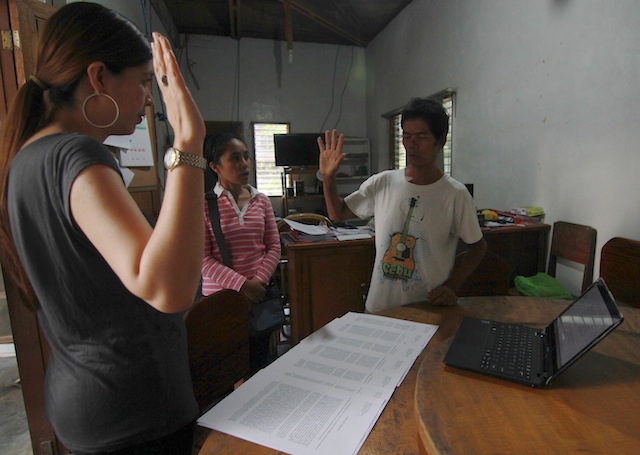
UNDER OATH. Orlando “Kaido” Engo takes his oath in Barangay Demoloc, Malita, Davao Occidental before lawyer Jacqueline Ann de Guia, chief of the Anti-Torture unit of the Commission on Human Rights (CHR) on March 18, 2016. MindaNews photo by TOTO LOZANO
The priest’s narrative was accompanied by a video clip showing farmer Orlando “Kaido” Engo, his 15-year old son Jerome and 14-year old grand nephew Ian, sitting down on the steps of the SCAA detachment in full view of the public, ice between their armpits, buttocks and groins, and iced water poured on them.
Evangelista described Kaido’s torture in the hands of Batol-batol and company in his account. Kaido himself told MindaNews on March 11 that “hapit ko mamatay” (I nearly died) from the butt strokes and beatings inflicted on him.
CHR chair Jose Luis Martin Gascon last week vowed to have the matter investigated “and will pursue it until the perpetrators are held to account.”
Gascon sent a seven-member team, four from the Anti-Torture unit of the CHR central office led by Atty. Jacqueline de Guia, and three from the regional office in Davao City.
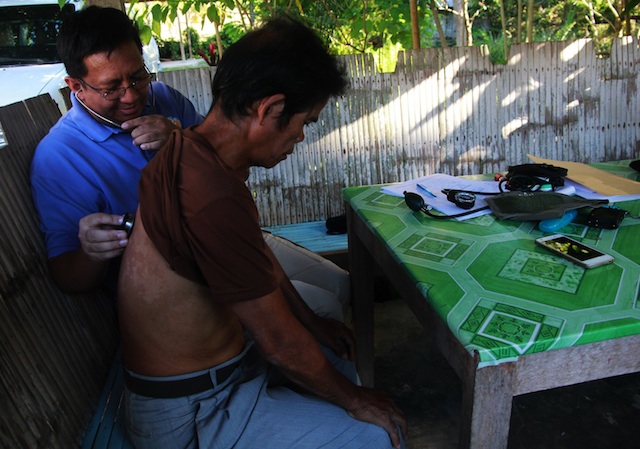
Dr. Joseph Andrew Jimenez, head of the Forensic Center of the Commission no Human Rights examines Tagakolu farmer Orlando “Kaido” Engo at the Malita Tagakolu Mission in Sitio Matamis, Barangay Demoloc, Malita, Davao Occidental on March 17, 2016. Engo was reported to have been tortured together with his 15-year old son and 14-year old grandnephew by an Army corporal and four members of the Special Cafgu Active Auxiliary (SCAA) last February 19 at their detachment in Barangay Demoloc. MindaNews photo by TOTO LOZANO
The CHR team visited Barangay Demoloc in Malita, Davao Occidental on March 17 and 18 and on March 19, the 72nd IB camp in Mawab, Compostela Valley province where Cpl. Sandy Batol-batol, three members of the Special Cafgu Active Auxiliary (SCAA) and a Cafgu Active Auxiliary (CAA) have been confined to quarters since their relief on March 9.
Batolbatol and company were relieved before midnight of March 9, a few hours after after Evangelista posted his account and the video clip. By morning of March 10, they arrived at the 72nd IB camp in Mawab, Compostela Valley, some 200 kilometrs away from Demoloc.
The 72nd IB has administrative control over the SCAA in the 10th ID. By noon on March 10, the team dispatched at dawn by the 72nd IB to find out what happened in Demoloc, was in Evangelista’s mission house.
Lt. Col. Michael Banua, 72nd IB commander told MindaNews Saturday that the investigation report on the five suspects has been completed and has been forwarded to the Judge Advocate General’s Office in the 10th Infantry Division.
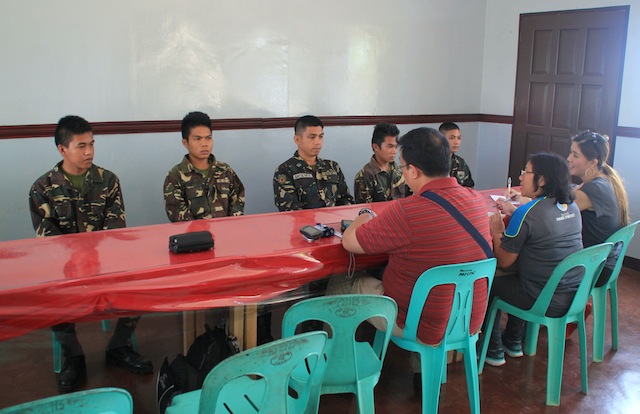
Members of the Anti-Torture unit of the Commission on Human Rights central office interview Army Cpl. Sandy Batolbatol (center), SCAA members (left to right) Jerome Saniel, JP Palaruan, Christian Dawata and CAA member Randy Sulutan at the 72nd Infantry Battalion camp in Mawab, Compostela Valley on March 19, 2016. The five have been relieved and confined to quarters at the camp for allegedly tortuing a Tagakolu farmer, his 15-year old son and 14-year old grandnephew at the suspects’ detachment in Barangay Demoloc, Malita, Davao Occidental on February 19. MindaNews photo by GG BUENO
Col. Manuel Sequitin, Chief of Staff of the 10th ID, told MindaNews that the recommendation is for the five to be subjected to court martial.
The NCIP chair, Leonor Oralde-Quintayo, herself a member of the Tagakolu tribe, sent OIC for Davao del Sur and Davao Occidental, Arnold San, to Demoloc last Thursday, to investigate the reported torture.
RA 9745 or the Anti-Torture Act of 2009 penalizes torture and other cruel, inhuman and degrading treatment or punishment.
Gascon expressed concern over the report of Fr. Joey that what happened on February 19 was not an isolated incident but “only the first instance of a formal complaint by a victim” and urged others with similar complaints to come forward.
“We urge others who may have also been harmed to come forward so that we may be able to ascertain the full extent of this unlawful practice. As with previous violations perpetrated by irregular militias and auxiliary forces, we continue to call for a serious and thorough review of this policy towards ultimately discontinuing the same as all security forces are obliged to observe universal human rights standards and are accountable for all violations thereof,” Gascon said.
Maj. Gen. Rafael Valencia, commander of the 10th Infantry Division also urged residents who may have had similar experiences to file a complaint. He told MindaNews the complainants can approach influential persons in their community such as priests, teachers or barangay officials, if they are afraid to file the complaint directly with the military.
Valencia said a priest from Sarangani informed him about the Facebook post of the priest from Demoloc while he and his officers were having dinner. He told MindaNews on March 15 that as soon as they saw the video and read the priest’s account, they immediately ordered the commanders of the 72nd IB and 73rd IB to relieve the five suspects. The 72nd IB has administrative control over the SCAA while the 73rd IB, whose camp is nearest to Demoloc, has operational control.
Before midnight, the relief was enforced. Valencia said they welcome other agencies that want to investigate Batol-batol and company.
Evangelista said a team from the Task Force Detainees of the Philippines arrived in Demoloc early last week to also conduct its investigation.
Batol-batol, 44, has been in the Army for 16 years, going on 17 by May. Investigated along with him are SCAA members Jerome Saniel, 20 and JP Palaruan, 22, both of them high school graduates; Christian Dawata, 19, and Randy Sulutan, 23. Dawata finished second year high school while Sulutan, a CAA, finished first grade in elementary.
http://www.mindanews.com/top-stories/2016/03/20/chr-ncip-probe-torture-complaint-army-recommends-court-martial-for-soldier-scaa/












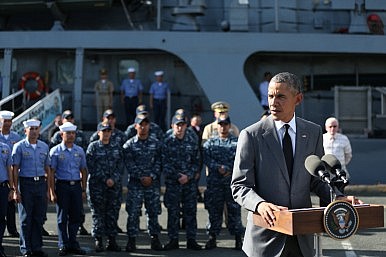
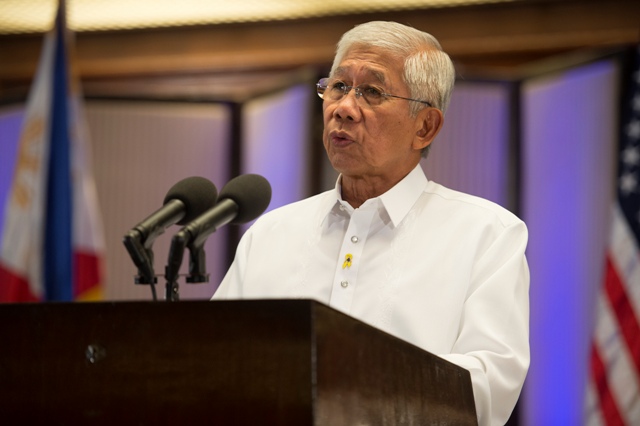
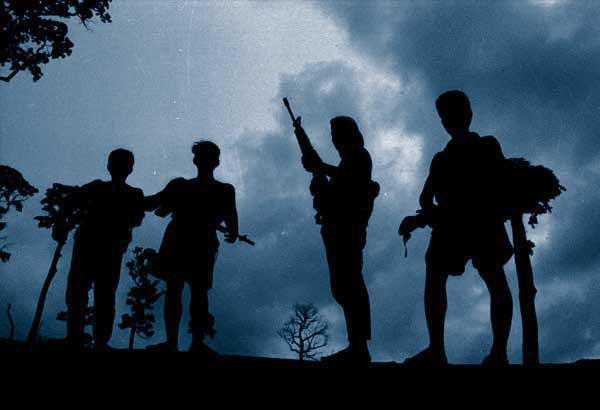
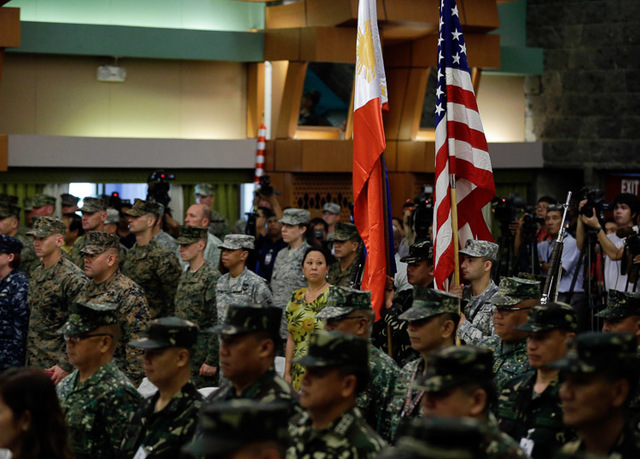
 Embassy of the Philippines, Washington DC
Embassy of the Philippines, Washington DC